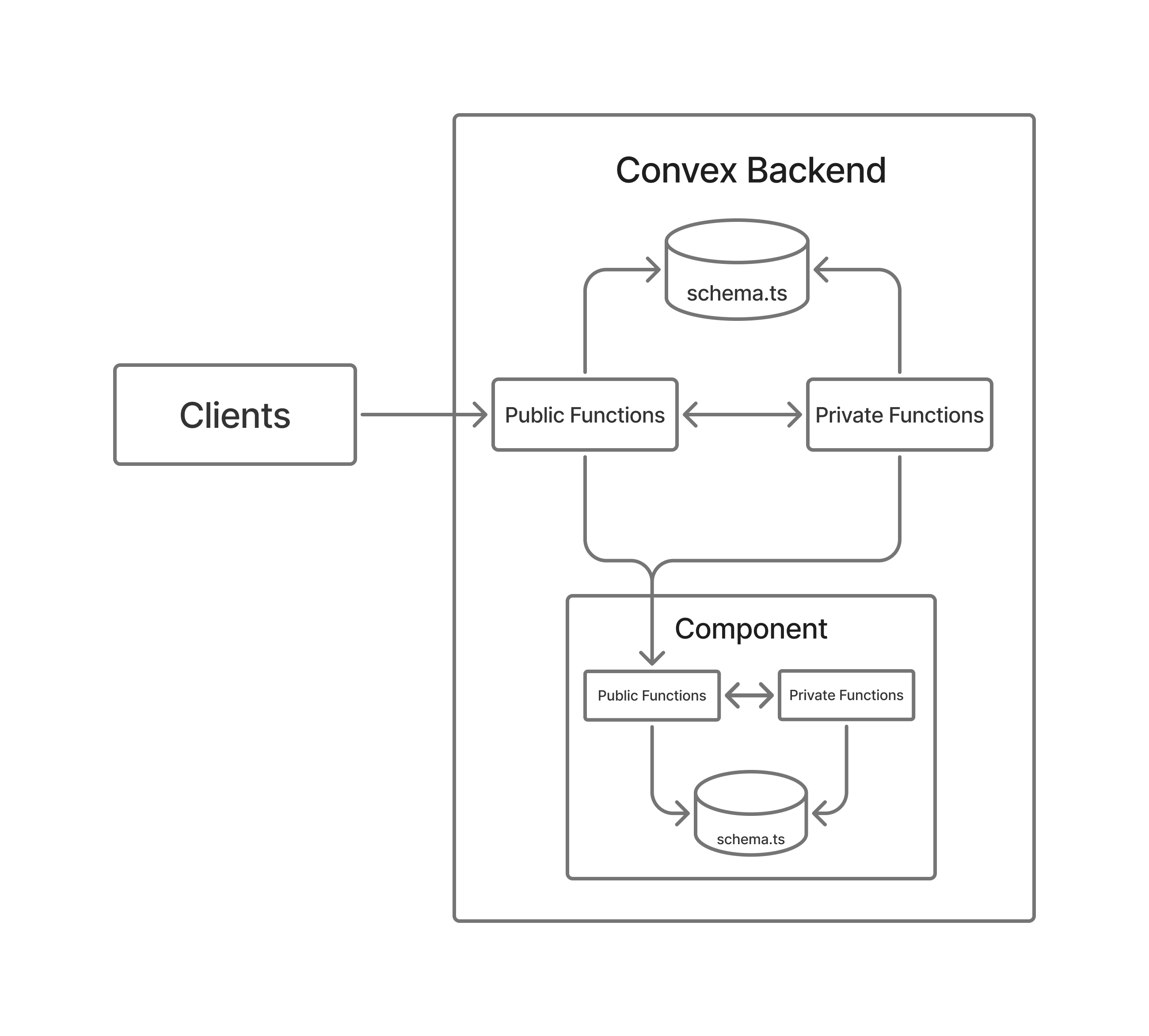Understanding Components
Convex components are self-contained backend modules that bundle functions, schemas, and data together. They let you add complex functionality to your app—like authentication, rate limiting, or document collaboration—without implementing everything from scratch.
If you've worked with modern web development, you've likely encountered similar ideas in different forms. Components draw inspiration from frontend components, third-party APIs, and service-oriented architectures. The key difference is that Convex components run within your backend, giving you the composability combined with the persistence and reliability of backend services.
The following diagram shows how data and function access works in the component ecosystem. Arrows from one element to another represent that an element has access to the functions or data of the other element.

Data
Similar to frontend components, Convex Components encapsulate state and behavior and allow exposing a clean interface. However, instead of storing state in memory, these can have internal state machines that can persist between user sessions, span users, and change in response to external inputs, such as webhooks. Components can store data in a few ways:
- Database tables with their own schema validation definitions. Since Convex is realtime by default, data reads are automatically reactive, and writes commit transactionally.
- File storage, independent of the main app's file storage.
- Durable functions via the built-in function scheduler. Components can schedule functions to run in the future and pass along state.
Typically, libraries require configuring a third party service to add stateful off-the-shelf functionality, which lack the transactional guarantees that come from storing state in the same database.
Isolation
Similar to regular npm libraries, Convex Components include functions, type safety, and are called from your code. However, they also provide extra guarantees.
- Similar to a third-party API, components can't read data for which you don't provide access. This includes database tables, file storage, environment variables, scheduled functions, etc.
- Similar to service-oriented architecture, functions in components are run in an isolated environment, so writes to global variables and patches system behavior aren't shared between components.
- Similar to a monolith architecture, data changes commit transactionally across calls to components, without having to reason about complicated distributed commit protocols or data inconsistencies. You'll never have a component commit data but have the calling code roll back.
- In addition, each mutation call to a component is a sub-transaction isolated from other calls, allowing you to safely catch errors thrown by components. It also allows component authors to easily reason about state changes without races, and trust that a thrown exception will always roll back the Component's sub-transaction. Read more.
Encapsulation
Being able to reason about your code is essential to scaling a codebase. Components allow you to reason about API boundaries and abstractions.
- The transactional guarantees discussed above allows authors and users of components to reason locally about data changes.
- Components expose an explicit API, not direct database table access. Data invariants can be enforced in code, within the abstraction boundary. For example, the aggregate component can internally denormalize data, the rate limiter component can shard its data, and the push notification component can internally batch API requests, while maintaining simple interfaces.
- Runtime validation ensures all data that cross a component boundary are validated: both arguments and return values. As with normal Convex functions, the validators also specify the TypeScript types, providing end-to-end typing with runtime guarantees.